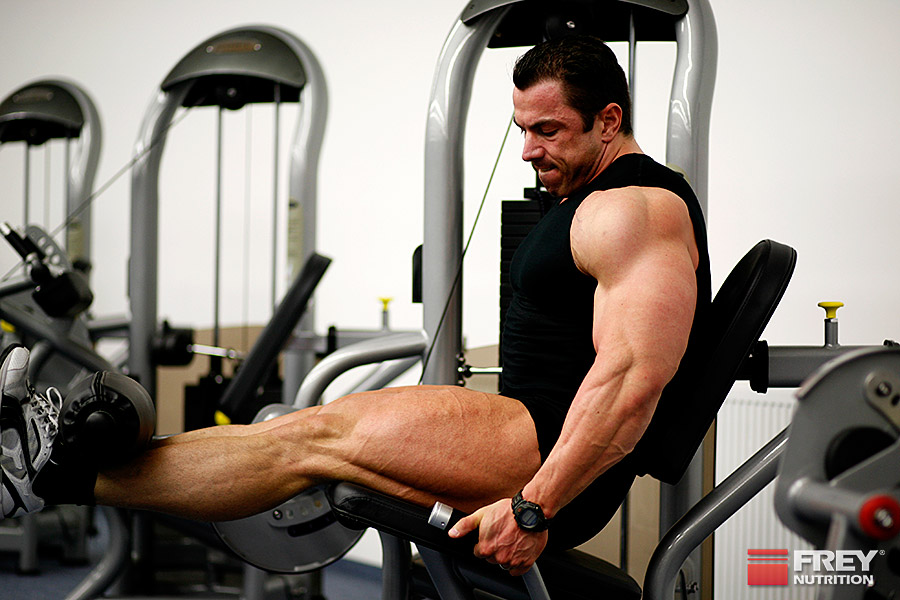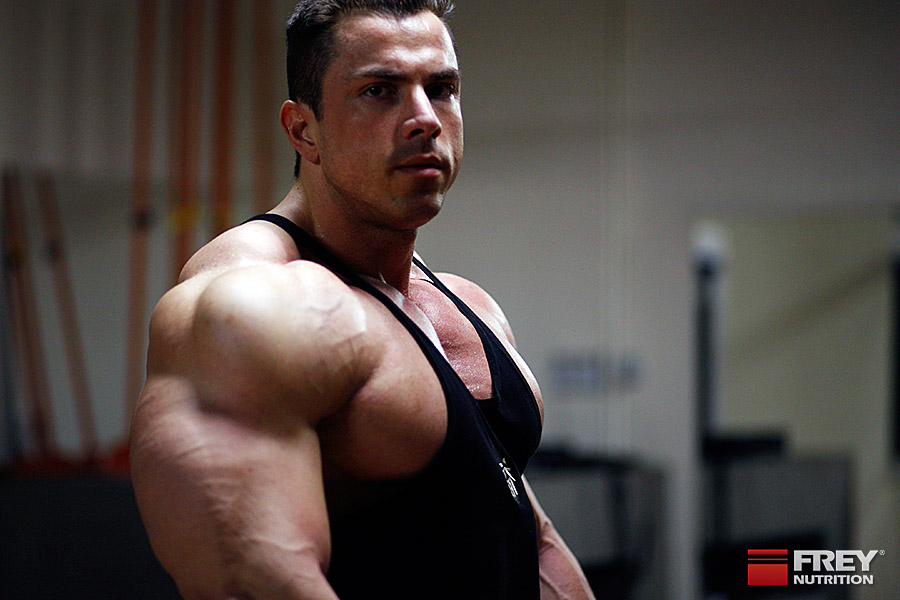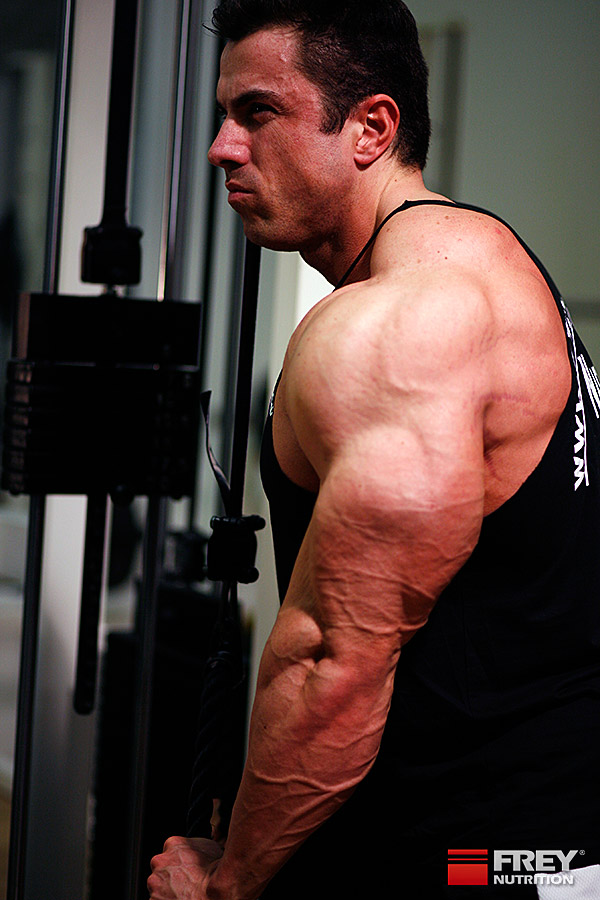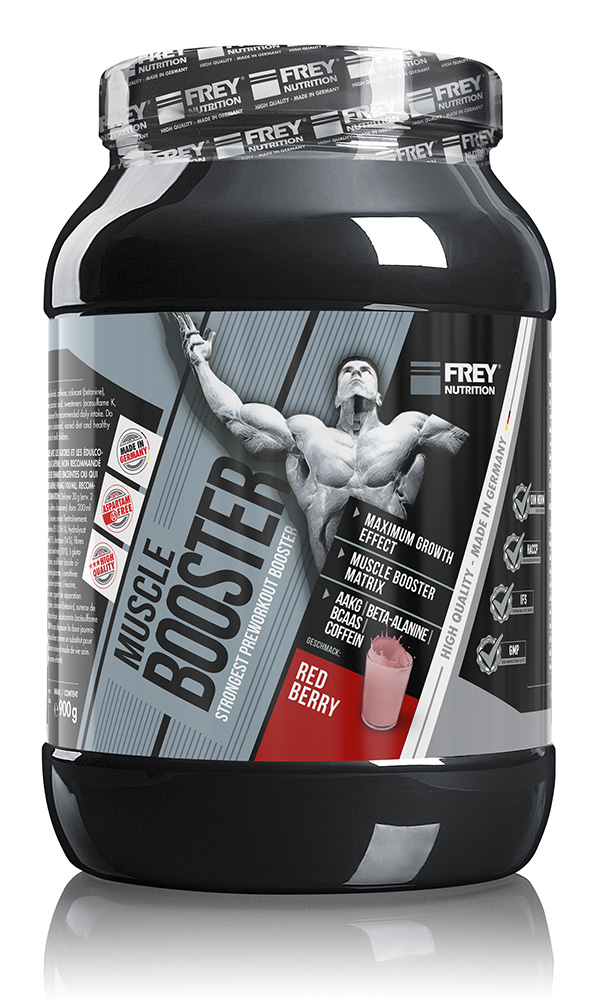62. FINALLY PROGRESS (PART 2)
COLUMN 62 |
FINALLY ON-
STEPS (PART 2)

NO MATTER WHETHER IT'S A BUILDING PHASE OR A DIET PHASE: THE PRINCIPLES OF TRAINING WILL NOT BE CHANGED.
?
Despite strength training and jogging, a "roll" remains on my stomach. And I also find it difficult to build muscle, although I use supplements such as BCAAs, glutamine, creatine, testosterone boosters and various protein powders. Even diets such as the anabolic and metabolic diets have not helped much. Why can't I get rid of this last "roll"? And what am I doing wrong when it comes to building muscle? I would be so happy to finally see real progress in myself!ANSWER
!

Your training should be based on the following 7 principles:
- 1. High intensity!
- 2. 10 sets for big & 6 sets for small muscles!
- 3. Training duration maximum 60 minutes!
- 4. Every set until muscle failure!
- 5. Average 8 to 12 repetitions!
- 6. “Clean” training without cheating!
- 7. Emphasize negative movement!
1. HIGH INTENSITY!
To keep the intensity high, you should always keep your rest times between sets constant: I recommend about 90 seconds.If the break is too short, you will lack the necessary strength. If the break is too long, however, you could injure yourself because your muscles have cooled down too much.
In every set, with every repetition, you should give 100% mental attention to the muscle being trained and concentrate fully on the muscle contraction in order to achieve high intensity!
If you follow the basic training principles, you will create optimal conditions for long-term muscle building!
2. 10 SETS FOR LARGE AND 6 SETS FOR SMALL MUSCLES
When it comes to sensible training, it's not about doing an endless number of sets, but rather the intensity you can bring to each set. It goes without saying that each set must be tackled with high intensity. Under these conditions, no more than ten sets are necessary for large muscle groups and no more than six sets for small muscle groups.3. TRAINING DURATION MAXIMUM 60 MINUTES!
It has been scientifically proven that training for more than 60 minutes increases the release of the catabolic hormone cortisol and thus muscle breakdown. You should therefore limit your training time to one hour. This gives you more time for recovery after training. And always remember: your muscles grow at rest during the recovery period and not during training.4. EVERY SET UNTIL MUSCLE FAILURE!
Muscles need a stimulus to grow, because only then can they prepare themselves by building new structures to cope with the strain in the next training session. That's why you should go to muscle failure. The basis for the stimulus is laid in the last few repetitions in particular.5. AVERAGE 8 TO 12 REPS!
Eight to twelve repetitions are the optimal range in both the building and dieting phases. For more advanced athletes, the holistic training principle with a comprehensive repetition range of six to 50 can be useful (I have described this method in detail in previous columns). If you reach the twelfth repetition in a set, increase the training weight by 2.5 to 5 kilos the next time to ensure a stronger stimulus.6. “CLEAN” TRAINING WITHOUT CHEATING!
A poorly executed set does not stimulate the muscle sufficiently and injuries are almost inevitable. Of course, a training partner can help you with the last one to three repetitions. However, if they have to do this after the second repetition, it makes no sense.7. EMPHASIZE NEGATIVE MOVEMENT!
Our bodies are used to performing positive movements - for example, pushing the barbell up during a bench press. Therefore, this type of movement does not fully stimulate the muscle fibers. However, the negative movement (such as the downward movement of the barbell during a bench press) is quite unusual for the body. It is confronted with a movement that is foreign to it, so to speak. So if you emphasize this part of the movement by increasing the duration of this movement, the body is more likely to respond with muscle growth. Personally, I perform the negative component of a movement extremely slowly: about three to four seconds. The positive movement lasts one to two seconds.For a three or four day split, a sensible breakdown could look like this:
THREE-DAY SPLIT
- Monday: Chest, shoulders, triceps
- Wednesday: legs, calves, stomach
- Friday: Back, biceps
FOUR-DAY SPLIT
The training principles I described do not change during a diet phase. Many athletes increase their number of repetitions during the diet phase in order to boost fat burning. Unfortunately, this is a misconception. The only thing that happens is that the intensity of the training is reduced, which can promote muscle loss during the diet phase. Only the number and volume of cardio units should be increased during a diet phase in order to speed up the metabolism and thus increase fat mobilization.
- Monday: Chest
- Tuesday: legs, calves, stomach
- Thursday: shoulders, triceps
- Friday: Back, biceps
TIP: CAFFEINE AGAINST FATIGUE
Especially after long days at work, you may lack the energy and motivation needed for an intensive workout. MUSCLE BOOSTER WITH ITS HIGH-DOSE ACTIVE INGREDIENT COMPLEX provide relief. In addition to free amino acids such as L-arginine and L-ornithine, it also contains a high dose of caffeine, which pushes you for training and gives you new motivation!SEND US YOUR QUESTION!
Do you have any questions about bodybuilding, nutrition, training or supplements? Then send us your question by email to: INFO@FREYNUTRITION.DEThis will then be answered personally by Andreas Frey in the form of a column and published here!













